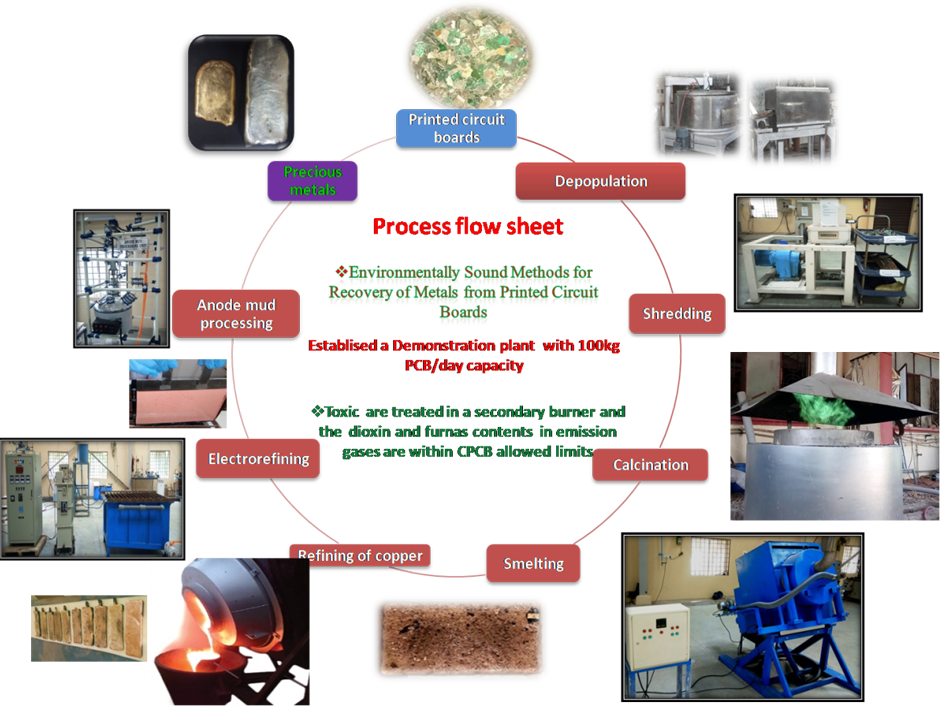The printed circuit boards are rich in metal content and are considered a high value waste. However, apart from some precious metals, rare metals and base metals they also contain some toxic elements. The toxic substances found in PCB can cause irreversible damage to the human body and environment. Printed circuit boards are of three types in general, single-sided, double-sided, or multilayer.
Of the several types of substrates used in PCBs, the most widely used one is the (Flame Retardant) FR4, which is made up of glass fiber reinforced epoxy resin with a brominated flame retardant in the epoxy matrix. Another widely used laminate is the FR2 laminate that is made up of paper reinforced phenolic resin with added flame-retardants. Conductive circuits used in most application are produced using copper. Elements such as nickel, silver, tin, tin-lead, and gold are used as etch-resistants. The resin type and the reinforcement used in PCB can affect its electrical and thermomechanical performance. The components mounted on PCBs generally include chips, connectors, capacitors, etc. For instance Tantalum is used in capacitors, elements such as Ga, In, Ti, Si, Ge, As, Sb, Se, and Te can be found in chips and other units. Solder joints contains Au, Pb and Cd whereas bridges and slots on boards are made of ceramics including, BeO and glasses. Semiconductors contain Ga, Si, Se, Ge, and other elements in smaller quantities.
The material present in PCBs can be categorized in three groups: organic, metals, and ceramics. The composition of these three material groups and their specific elements vary from one PCB to other. PCBs differ widely in their composition and a comprehensive analysis is difficult to produce with any great degree of accuracy.

( Typical composition of printed circuit boards )

( Value distribution of metals in PCB )
C-MET , Hyderabad Laboratory has developed environmental friendly technology for recycling of electronics waste and established pilot plant facilities for providing services for processing PCBs from e-waste (100kg PCB/day). The process technology involves dismantling, depopulation, segregation, shredding, smelting, , electro refining and chemical processes. Detailed flow sheet of CMET process is

Process know- how is available for technology transfer for interested parties
Under the umbrella of CoE process technology is being scaled up to 2Tonnes/day capacity